End of 2023 Roundup - Update on the War's Technological Progress
As the year heads towards a close, let’s take a look at where things may be headed technologically in the conflict, as well as give a summary of sorts of where Russia needs to militarily improve to finish off Ukraine.
This article is going to focus on the technological aspects of the war, and is therefore a direct sequel, of sorts, to this one from February 2023, where I tried to look forward to the technological changes expected to come, should the war last several years.
The Changing Face Of War - Future of the Russian SMO
“There are decades when nothing happens, and there are weeks when decades happen.” - Vladimir Ilyich Ulyanov Throughout the vast history of warfare, there have been certain conflicts which have served as key hinge points in the advancement of military science. The foreshortened lens of history beguiles us with the view of wars as static monoliths: two si…
But that one included a full blown historical overview to give a contextual grounding to ongoing advancements, whereas here we’ll just jump right into things without any preamble.
Firstly, there’s an interesting aspect to note, which serves as a basis for the broader discussion. Just days ago it was reported by Japan’s major paper Nikkei that, according to their ‘sources’, when Xi visited Moscow, Putin secretly expressed to him that Russia intends to fight in Ukraine for “at least 5 years”, if not longer:

One caveat: though it’s being reported now, this allegedly took place in March. Back then, Russia was obviously not in the same position on the battlefield as it is today, and even Putin likely couldn’t have foreseen how utterly disastrous Ukraine’s counteroffensive would have become. So it begs the question, if such an exchange took place now, would Putin give the same timeline, or would he feel more confident in expecting a quicker outcome?
Of course, there’s high chance that the news is simply made up. But it’s supported by a few other indicators:
As we’ve discussed before, a country outlining huge military surges for the next several years, building entirely new field armies from scratch by calling up over 500k men this year, is likely not expecting to stop fighting anytime soon. It’s clear that Russia is preparing for the long haul, and so the “5 year” timeline is not entirely implausible.
Several times in recent months I’ve reported statements from top Russian officials insinuating that the war could last several years. Medvedev himself suggested this year that the conflict could last “decades”:
"This conflict is for a very long time. It is all probably for decades," Medvedev told journalists during his visit to Vietnam.
The point is to say, that since there’s a chance that the conflict could last at least several more years, such a span of time is bound to encompass vast developmental surges in battlefield technologies and innovations. Of course, I myself don’t see the conflict lasting past 2025. But given the signaling from Russia that it’s quite content to fight passively in order to privilege economic and geopolitical development and stability over the society-destabilizing “high intensity” commitments of a full war-footing, it is remotely possible that Russia could slow-roll the war into 2026 and beyond.
One of the reasons is: things feel terminal now as a consequence of the cut in funding owing to the US Congressional spat. But many rightly believe this uniparty squabble will be resolved in the new year, and Ukraine will still receive its hoped-for boon nearing a hundred billion dollars, which could keep it going for quite a while longer.
Compound this with the fact they’ve gone on defense and are now heavily conserving equipment, which is leading to relatively few losses of their armor at present, as evidenced by what we’re seeing. Add the now launched major mobilization drive and they have a chance to hold out for very long if that funding comes through.
Some will scoff, wishing that Russia would just pull the plug and end this misery all the quicker. But that gets to the very heart of the technological discussion: Russia simply isn’t able to do that at the moment, because it’s finding itself embroiled in a type of future war that few could have predicted.
In the broad sense, anyone could, and did, predict the general slant of modern warfare: drones, AI, etc. But I’m not sure that many quite predicted, specifically, how lethal and un-counterable the FPV threat, in particular, has gotten. This has really become one of the main issues presently, and it’s a quite intractable one.
Suffering from standard artillery shell hunger, Ukraine has asymmetrically invested into small, cheap drone production—and it’s paying off for them, as Russia is struggling to develop a consistent counter against them. Sure, Russia itself outproduces Ukraine in raw FPVs, but the issue is, since it’s Russia that is now on the offensive, the situation favors Ukraine. Russian forces have to go out in the open to attack, creating a target-rich environment for the AFU. The Ukrainians on the other hand are all bunkered up and no longer assault, so despite having a positive FPV ratio, Russia doesn’t have as many easy or open targets to hit. Most of the FPVs are spent simply pelting AFU fortifications to occasional success. Sure they still get plenty of kills but it now costs them far more drones to do so.
Russia is rushing out many anti-drone technologies, both for the trench and mobile armor. We see it with increasing regularity on every front:
The problem is, the better ones are still few and far in between, and as stop-gaps Russian troops import a lot of cheap consumer Chinese jammers, many of them cobbled together from random assorted parts. Many of these have big limitations and are of marginal efficacy—they’ll either be highly directional and therefore not able to do sector coverage; or they jam very narrow frequency bands, which doesn’t cover the majority of drone types; or their output wattage is simply too weak to create a truly protective screen.
I monitor several obscure radioelectronics channels on both sides—and believe me, the Ukrainian ones are even more revealing, as they often do breakdowns of captured Russian electronics with unvarnished commentary and insight. There are many Russian devices pertaining to drone and jamming technology which they’ve captured and are impressed with, and many others they ridicule for being lowgrade consumer junk purchased from Chinese sites like Aliexpress.
Here’s one example of a Ukrainian video of an FPV hitting a Russian tank with a jammer on it, which clearly did nothing:
However, no footage has yet surfaced of any tanks with the newest Russian Volnorez “Breakwater” jammers being hit. Unfortunately, those are precisely the ones in lowest supply.
Here’s a recently sighted Russian TOS-1 “Solntsepek” launcher with RP-377UVM1L Lesochek electronic warfare module:
Though it may be crudely strapped on with what looks like belts, here’s what a Ukrainian radioelectronics expert had to say about it:
This electronic warfare is designed to protect equipment from radio land mines, but can be used against FPV.
I saw its spectrograms, the interference there is of very high quality, but the price for this is a short protection range.
And that’s one of the issues for all these systems, their protection range is very short, which means two things:
Sometimes an FPV can still be crashed into the vehicle—if stationary—due to simple inertia. If you point it correctly and speed up, even as the jammer kills the video feed, the FPV can still continue on to hit the target.
It affects FPVs meant to come in direct contact with a target, but not necessarily grenade dropping drones which can hover fairly high over the target and unload ordnance onto it, as we’ve seen many times. The altitude at which they hover—100-200ft—can usually be above the effective jammer range.
AFU sources have noted a big uptick in Russian jammer pack usage—all kinds of ad hoc and jury-rigged systems are seen:
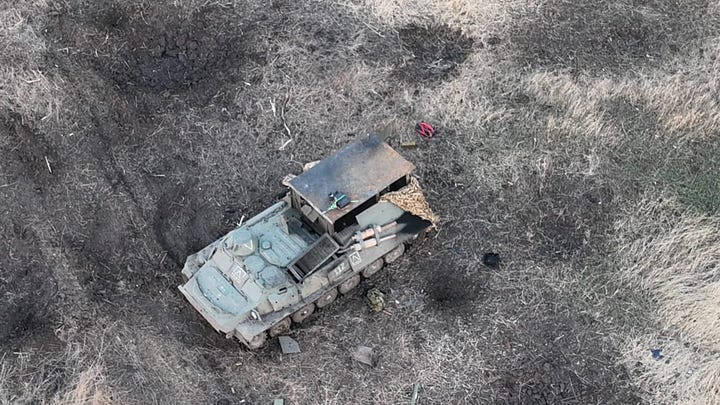
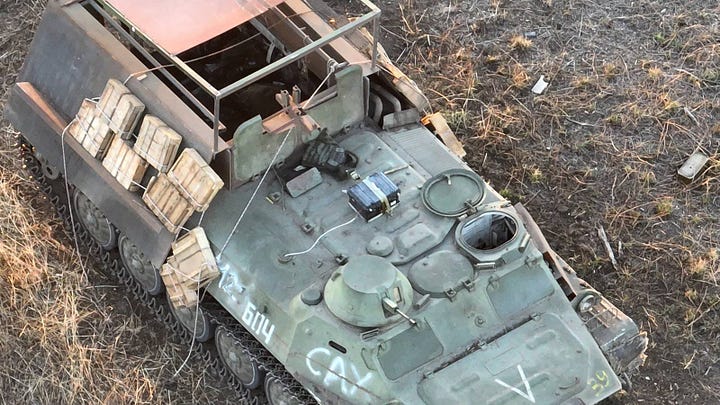
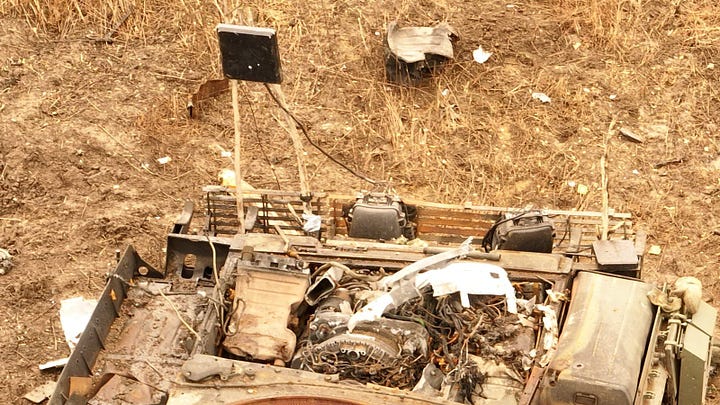
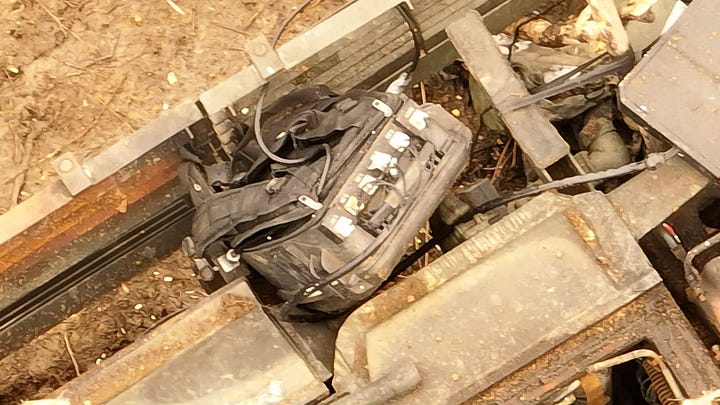
Russian forces continue to innovate many ‘workarounds’ in the highly contested EMR spectrum environment. For instance, it was noted they’ve been placing beacons on the ground which allow for offline drone operation in a highly contested electronic environment:
When the drone’s navigation is jammed, it’s able to orient itself by way of these hidden beacons dispersed in the area.
Listen to the video below about some of the new electronics and drone-detectors being rolled out by Russia:
The video showcases one of the current harsh realities on the front: that in the absence of the ability to fully jam or counteract enemy UAVs, the next best option is simply their timely detection, which at least provides awareness and an opportunity to evade them.
Many Russian troops now travel with small drone detectors which can detect nearby FPV signals, but not much beyond that. It at least affords some measure of forewarning.
Units like the following are being purchased from—again—Chinese companies:
Information has been received about the purchase of 500 such electronic warfare kits by the Russian Ministry of Defense.
This is a Chinese product. The Russian Ministry of Defense bought it for 600,000 ($6000+) rubles per unit.
They’re seen occasionally on the front:
Russia has their own such units currently being developed and rolled out for trials, but so do many other countries. Ukraine likewise is testing similar things.
The US as well:
But the reason these aren’t a panacea solution: drone jammers can be easily detected and have their positions electronically fixed via spectrum analyzers.
Since the whole point of a jammer is to overload the airwaves with high amounts of “noise”, you are effectively making yourself a giant ‘sore thumb’ to stick out and be pinpointed. Of course during a full-blown assault, when the enemy already knows your column’s position, it doesn’t much matter unless he has specialized weaponry that can hone in on the actual signal and automatically attack it in the way some anti-radiation missiles (ARM) do.
Right now there’s a war for the bands and frequencies—Russia rolls out jammers for one band, but then Ukraine starts rolling out new drones that operate on a different band, making the previous jammers useless. The most advanced and optimal type of system would first analyze the signal from the incoming drone(s) then tailor a response on the appropriate jamming band, but thus far this technology seems relegated to the larger truck-mounted enterprise systems; i.e. Russian Zhitels, Moskva-1s, Borisoglebsk, and things of that nature. The reason being they require much more processing power, cooling, etc.
The conflict has re-energized the US MIC’s own pursuits into the electromagnetic spectrum:
WASHINGTON — The observable success of electronic warfare in the Russia-Ukraine war is motivating the U.S. Army to get its own in-development jammers deployed as soon as possible, according to an acquisition official.
After decades of arsenal atrophy, the service is again prioritizing electronic warfare, including through its Terrestrial Layer System-Brigade Combat Team and -Echelons Above Brigade initiatives.
The US Navy has reportedly already been deploying and testing a system called DRAKE (Drone Restricted Access Using Known EW):
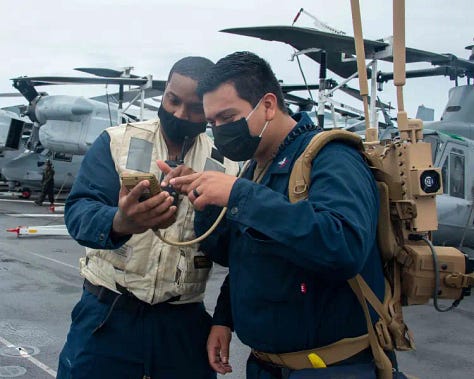

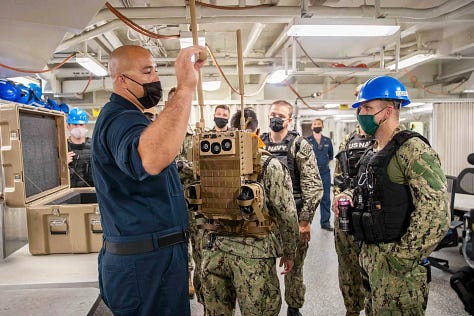
“If we encounter a [drone] that happens to come up on the forward-end of the ship, up near the foc’sle, and then it just decides to bolt and go to the aft end on the flight deck, I can just pick this backpack up, I can run to the flight deck and I still keep blocking that signal to make sure the drone stays away from us.”
The problem is, it’s one thing to develop a few test platforms and a whole other thing to equip a massive 500k+ man army with enough ready units to resist an unprecedented number of drones—hundreds of thousands per month. Every single brigade, battalion, company, platoon, etc., needs their own units, and it’s proving a tall challenge.
Recently we’ve seen the highest number of FPV hits against Russian forces since the start of the conflict. Everything is being hit, which is compounded by the earlier mentioned fact of Russia going on the offensive everywhere, requiring many units to be exposed and out in the open. However, despite the huge uptick in hits, there are a few silver-lining takeaways.
What I’m finding is the actual trenches and deployment points appear very well protected. They are rarely appreciably penetrated or even reached by Ukrainian drones of any kind. No, almost every hit is made against:
Mobile armor units on the move toward an AFU landing across the gray zone
Straggling solo troops which are doing supply runs to their small unit dugout
Lone supply carts (Bukhanka wagons) on the second echelon line
This is in stark contrast to how Russia is hitting the AFU, as Russian FPVs regularly penetrate every single AFU trench, fortification, dugout, stronghold, etc., which allows us to visualize a large disparity between EW capability. In short: Russian trench EW “dome” systems appear widespread and systematized quite well. But anything outside of the trench’s safekeeping instantly turns lethal.
Anyone monitoring the internal chats of actual frontline Russian troops, correspondents, etc., will note virtually all discussion and outrage presently centers on this major growing drone problem. No one is talking about any artillery shortages, or even drone shortages of their own. The issue is solely that FPVs have become an intractable thorn in Russia’s side. Some critical frontline areas have been so utterly locked down that Russian troops are literally unable to move or leave their trench. They have to get food delivered to them via a drone, which drops food and water. The moment they step out they’re targeted and killed with enemy FPVs.
Yesterday they even began to write about the new Ukrainian tactic involving two FPV operators working in pairs, which fly their drones together, and are able to immediately finish off any soldier that the first operator happened to merely ‘wound’. It may seem like a pedantically obvious tactic, but until now most FPV teams continue to operate solo, one at a time.
Russia must be commended for very agile developments in certain sectors of drone warfare, particularly in regard to the several stages of evolution that drones like the Lancet have already gone through, with the new Lancets recently being announced:
Which even came with a new sizzler from manufacturer Zala:
The Lancets have gone through repeated iterations, with each new stage sporting improvements like: IR thermals; new thermobaric anti-personnel variants; LIDAR sensors to detect target’s range and hardkill through anti-drone net obstructions; upcoming new batch-launch capability for swarm tech; AI integration for auto-target-acquisition, and more.
In certain areas like that, Russia is to be commended. But in other areas it’s lagged behind, namely in UCAV technology. Two years into the war, and Russia still does not field a single serviceable UCAV—Unmanned Combat Aerial Vehicle. These are drones which can strike targets themselves, rather than merely surveil or designate targets (with lasers) for other systems, like Krasnopol, or simply fire correction. Sure, they have the Inokhodets and Israeli-licensed Forpost, but neither have been seen to utilize any UCAV abilities with any regularity.
This is the one area that continues to stump me as to how Russia could be behind countries like Azerbaijan, Turkey, Malaysia, Iran, and many others—which all have more sophisticated UCAV programs. The likely reason for this is as follows:
Russia has recognized early on that UCAVs are somewhat obsolete in a near peer environment. I’ve been highlighting this since the start of the conflict, as the Bayraktar TB2s were getting blown out of the sky.
The problem is, in order to carry powerful weapons systems (missiles, guided bombs, etc.) a UCAV has to be large enough, which necessarily means it becomes a sitting duck for radars; which further means it will not be able to operate on a near-peer battlefield. Russia learned this the hard way themselves by initially testing Iran’s Mohajer-6 UCAVs at the start of the conflict, which apparently were quickly shot down by Ukrainian AD and proved to be of little use compared to the Geran/Shaheds, which at least have mass swarm/saturation ability.
However, here’s what I take issue with. Even despite the above, the AFU itself managed to find a few small bypasses to insert the TB2 and hit some Russian assets. Normally this happened to a few over-extended vanguard units in Kherson, which outranged their own rear AD—whether accidentally or by some exigency.
If Ukraine could bypass Russian radar nets even occasionally, then Russia with a TB2 equivalent would be able to bypass Ukraine’s far less considerable AD nets much more often. That means that a UCAV could still have utility particularly given that Ukraine’s AD is being progressively attrited, which would have allowed UCAVs to make a growing impact on the battlefield in certain sectors.
For instance, look at Avdeevka. It resides in a cauldron, likely without the best AD coverage, which could give UCAVs a potential breakthrough to make a dent there, particularly if it’s one capable of firing more of a stand-off range munition, rather than freefall laser-guided bombs—which require the UCAV to hover nearly above the target.
Sure, Russia has Ka-52s, but they operate from FARPS so far away that by the time they’re called in, Ukrainian armor has long withdrawn. It works fine for larger assaults, but for fitful positional engagements it’s ineffective. In Avdeevka we see M2 Bradleys pop out for a few minutes to rake Russian positions along the forest landings, then quickly retreat. A UCAV nearby could have engaged them within minutes. Instead, a Ka-52 might take 30-45 minutes to arrive and those M2s are long gone back to some hangar in Berdychi.
Russia has built more Inokhodet/Orion drones, however they’re clearly only being used for fire-correction and recon purposes as all video shows them using their superior optics to observe cities/targets at safe 20-30km ranges. The only logical explanation is they’re too expensive for Russia to risk in direct UCAV overhead roles. But this is a failing of Russia for not developing a UCAV that has longer range standoff weaponry. An Orion with LMUR missiles or something equivalent to Israeli Spike NLOS (Non Line of Sight) variant is what’s needed. Instead, the only type of “UCAV” Russia developed has the equivalent of some short range ATGM.
There is one potentially positive development here. Some of you may have seen the announcement that Russia is allegedly now ‘mass producing’ the MPD-01 Termit drone copter:
After successful trial in the war, Russia has started serial production of MPD-01 Termit helicopter-type drones, equipped with three S-8L missiles. They can be transported on the back of any pickup truck or a trailer. Artificial intelligence enables the Termit to function in "free hunting" mode. Russia surprises by their fast development cycle for cutting edge weapons.
At first you may laugh: a helicopter? What, they gave up trying to build a proper UCAV like the Predator, Reaper, Bayraktar, etc.?
But I have a revelation for you: this move is actually genius, and such a platform—if actually being made in number—would be far superior to any “UCAV” in the type of near-peer conflict where both sides have advanced air defense.
Reapers, Predators, Bayraktars thrive against technologically inferior foes with no AD to speak of. Against even a moderate air defense they would be instantly shot down, as they present gigantic targets. But there’s another reason people aren’t aware of: most UCAVs drop “precision bombs” which have to be guided by a laser and are free fall. That means the drone has to be pretty much above the target, nor can it operate at a low altitude. Such limitations mean to hit a target on a frontline, the drone has to operate right on the frontline, in full view of air defense that will easily destroy it every time.
Some drones like the Reapers can fire Hellfires which might have a 10km range or so, however they’re usually fired at far closer distance simply because at max range the drone’s optics cannot consistently paint a laser on a given tiny target. Some Hellfires do have radar seekers, but that’s useless against troop concentrations.
This results in most attacks having to be done from a few kilometers away, and you can prove this by watching the dozens of US strike videos where you can clearly see the Predator/Reaper drones are pretty much right on the target:
Yet they still have to be at high altitude, which would get them instantly shot down against a near-peer foe.
But that’s where the genius of Russia’s completely novel approach lies. A rotary wing platform allows you to get close to the frontline but still stay out of radar range by flying low, just over the treetops in exactly the way Ka-52s and other rotary strike craft currently operate.
This provides all the advantage of UCAV drones without the disadvantage. Further, it allows you to merely hover in place and observe targets, without having to do ‘tracks’ and passes in the sky, which only give you a 50/50 window of firing where you have to “turn around” and come back for another loop if you’ve overflown the fire-solution window.
This platform can just hover in place right above treeline, where even nearby radar systems wouldn’t pick it up due to radar horizon, and watch the battle unfold, picking off targets as they come in—particularly given that it has a massive 6 hour flight time and 300km combat range. Even more critically, it can be kept at makeshift “FARPS” right near the frontline, not dozens or hundreds of kilometers behind like Ka-52s. The released literature claims they can be stowed on pickup trucks, etc.
Their armaments are the same S8 rockets which are used in “dumbfire” mode on Ka-52s, Mi-28s, Mi-24s, and even the Su-25 planes which are seen firing them daily into the air:
However, this Termit platform reportedly has the new S-8L variant, for “laser” designation—which means it’s a laser-guided version—perfect for picking off armor and vehicles.
By far the most successful weapons platform in the Russian arsenal over the past year has been the Ka-52—with perhaps only the Lancet contesting it. If Russia can actually roll out this miniaturized copter drone, it would be equivalent to vastly multiplying the Ka-52 threat over a much broader area, allowing fronts with less access to Ka-52s to basically have their own on-demand call-in air support.
So yes, if—and it’s a big if—Russia can actually make these in number sometime soon, they can be a real game changer, making up for the glaring lack of UCAV presence. And that’s not even mentioning the fact that these “Termites” are claimed to sport AI autonomous hunt mode capability. That being said, I still remain skeptical they’ll roll them out anytime soon only because, for whatever reason, Russia’s aerospace industry remains the biggest straggler thus far, and I have seen nothing to convince me that they have the capability to suddenly pump these out like hotcakes when after two years they still can’t produce Orions or Forposts in number.
That’s not to mention Russia had previously “unveiled” a similar Katran rotary drone several years ago, and that went no where—so we’ll see how serious they are about this one.
Let’s not forget that despite being behind in some technologies, Russia is likewise ahead of the combined West in many other areas. In yesterday’s strikes we were made witness to a new capability that stunned the whey-faced Western OSINT crowd. In a sight never seen before, Russian Kh-101 missiles were filmed ejecting countermeasures in the last leg of the strike:
The famed military (and tire) expert below made it quickly known that US missiles have no such equivalent capability:
"Rare footage. In the video, the Russian X-101 missile shoots decoys on the final leg of its flight. This is not a simple heat trap, as is commonly believed, it is also a cloud of small “needles” of different lengths, designed to deceive air defense guidance radars. Shooting occurs 6 times with 4 traps in the last kilometers before the target. 12 on one side and 12 on the other. The module is called L-504.
Not to mention even Ukraine has now officially admitted that out of 300+ fired Kh-22s since the start of the war, not a single one has been intercepted by all the most advanced NATO interceptors:
The missile, by the way, flies at 4,000 km/h (Mach 3+) but we’re supposed to believe they’re regularly shooting down Kinzhals which fly 12,000 km/h (Mach 10+).
So there are some areas where Russia lags, but others where it’s clearly ahead by a long mile; it’s an asymmetric game. Not having the Federal Reserve’s endless money printing abilities, Russia is forced to take bets with investments in key areas, while neglecting other—deemed to be—non-critical ones.
The next—and final—big ballgame is of course AI and swarm technologies, as always. All year we’ve been treated to announcements on every side regarding new initiatives in this direction:
But there’s not much more to be said on this which I haven’t already said in previous updates, other than everyone’s “working on it”.
In general, as a final word, if you examine my article from February, you’ll find the predictions for the conflict’s future bore out fairly accurately. For instance:
As can be seen I foresaw the destruction of their offensive potential and reorientation to a purely defensive posture even long before the summer counteroffensive. In that same spirit, I’ll try to predict the tenor of the conflict for 2024.
Given this preponderance of FPVs and no realistic solution to effectively and consistently neutralize them, I foresee the conflict continuing to get bloodier for anyone daring to assault. Unlike artillery production, FPVs can be easily scaled up by spreading around their easy-to-3D-print manufacturing processes to any and all countries, including those without any military capacity of any kind. That means unlike all other weapon types, FPVs are the one area where AFU will likely continue increasing their capabilities unhindered.
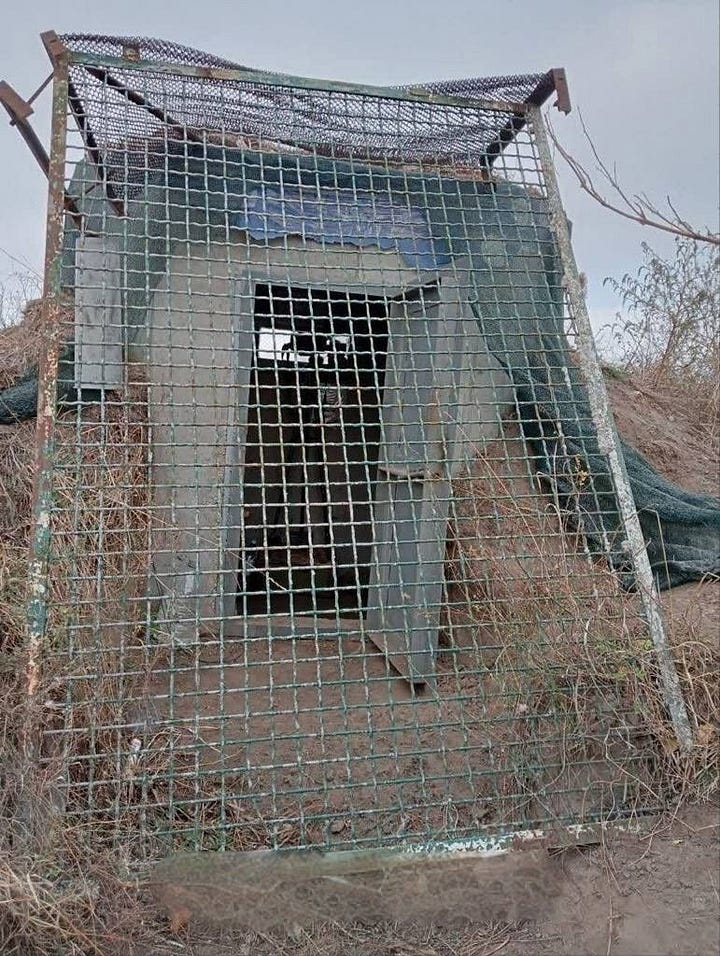
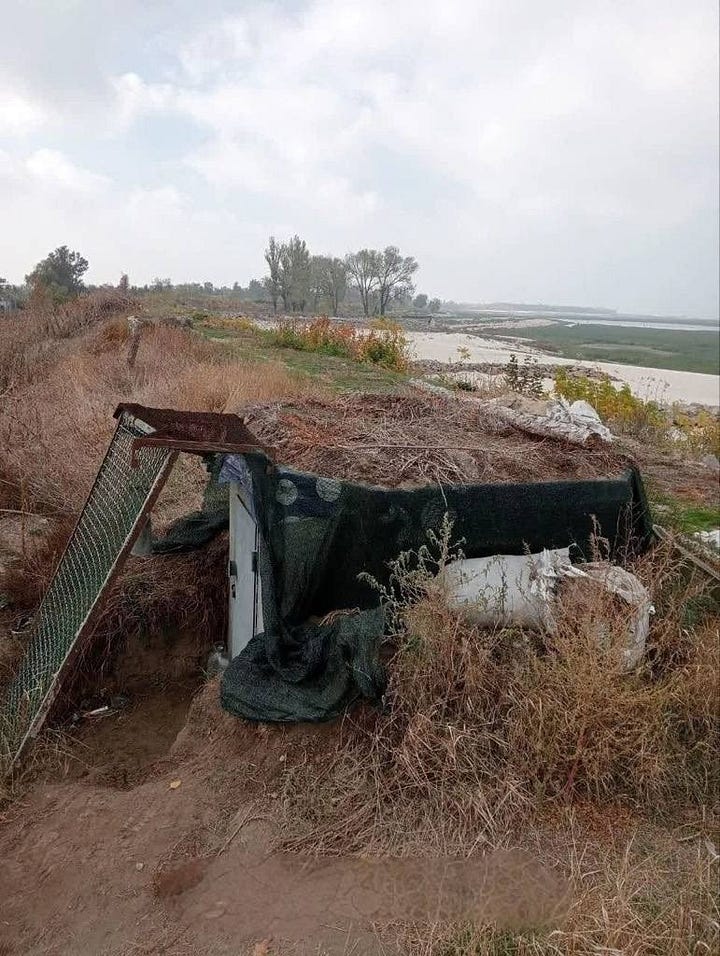
It’s always a ‘seesaw’ battle, where one advancement leaps forward to take the lead, only for the counterbalance to then catch up, ad infinitum. Russian forces will likely continue getting better detection equipment, various automated analyzers, including those on surveillance drones (like the Orlan series), which will allow better and more timely identification of Ukrainian FPV teams. To some extent it’s already been coming to this—but it will increasingly turn into a game of hunting opposing drone teams. The most valuable target on the battlefield will be the FPV drone op, and they will be ruthlessly hunted via the electromagnetic spectrum, and every other means.
One of the reasons is it takes time to build up the skills of a truly talented FPV drone operator. Just take a look at how Russia trains their accuracy:
Furthermore, it’s now being written that a simple ability to steer a drone isn’t enough. True drone ops need to be experts in demolitions and engineering so as to be able to handle the explosives with which their drones operate, knowing the nuances and all the ins and outs.
This is a major reason why Russia may slow-roll their campaign, and be content with simply attritioning the AFU with their huge artillery disparity from a safe distance, with only moderate, stepwise advancement in secure areas. Until Russia can roll out provably functional jammers en masse, it’s nearly pointless to conduct large-scale assaults. The combination of mines and FPVs is nearly insurmountable: the mines disable your vehicles, then the FPVs descend like a flock of vultures to finish off the crouching survivors. To combat some of this, Russia has even resorted to rolling out fake dummy bodies as scarecrows to attract, and hopefully waste, enemy FPVs:
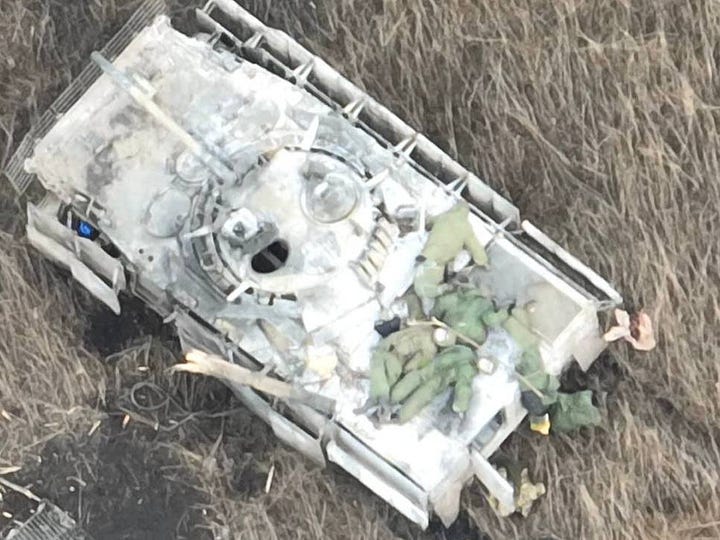
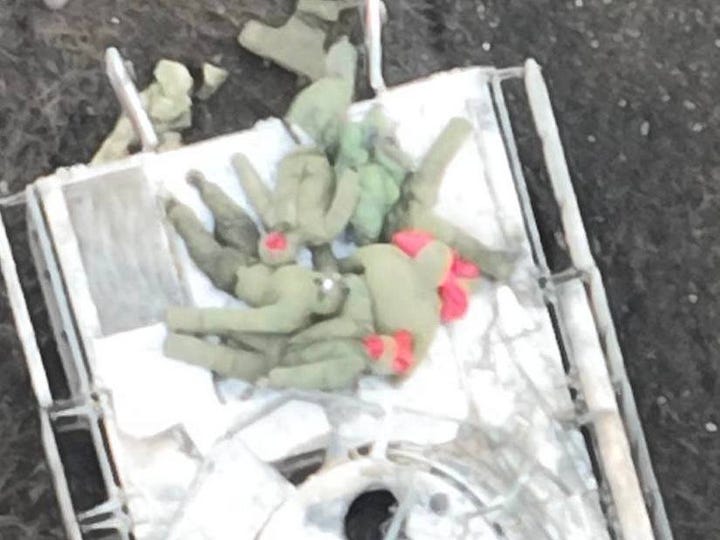
Sure, you can still assault and take territory—it just comes at a far greater cost. Urban areas are a little different. There are many more obstructions and ways to avoid the drones than in the wide open fields, particularly given that urban environments vastly shorten wireless signals to the drone controllers.
But this isn’t quite a blanket characterization, and in fact is a bit overstated. There are fronts where Ukraine’s drone concentrations are greater, and those where they’re very slight. On the latter fronts Russia has success advancing in spurts because the skills of good drone ops and the equipment itself is simply not linearly distributable across the entire AFU no matter how simple it is to manufacture FPVs. For instance, in Khrynki and Avdeevka the AFU’s drone concentrations are ferocious—but in Kupyansk direction they’re nearly nonexistent for whatever reason.
It will simply have to come down to each squad having a mandatory SOP of at least one drone-jammer with strict protocols of how far each member of the unit can ever stray from the guy with the jamming station backpack. This member should basically be without arms but rather trained to exclusively monitor all acoustic, electromagnetic, thermal and other channels for FPV signals. This has to be a squad level thing no different to a grenadier MOS, but unfortunately we’re probably a long way off from any such standardization.
Also advancements will have to be made in some sort of IFF (Identify Friend Foe) networking for drones and EW systems. One of the problems is Russia has powerful enterprise-level EW that often can’t be used as it jams their own consumer-grade drones.
Tactics also will continue to be advanced and improved. Russia has shown a few attempts recently in Avdeevka of mass-saturating the battlefield with artillery-fired smoke canisters to blind enemy drones during assault. But ultimately none of it is effective without top notch ISR. This is by far the number one area that needs improvement as modern advancements have made it ever-more-difficult to conduct recon on enemy positions.
In the past, forward deployed scouts had to be everywhere in order to observe the battlefield. Now the enemy sits in covered positions, underground, etc., and flies drones to see everything. Even ATGM stations can now be unmanned, as the Ukrainian Stugna-P has proved.
That means modern ISR has to be increasingly advanced and sensitive in order to identify enemy positions. All enemy suppression starts with ISR and being able to locate firing positions. Though Russia has a strong ISR tradition, integration, and training, many of the systems themselves are long in the tooth and not up to task of the modern battlefield. The sensors in birds like the Orlan, for instance, are increasingly obsolete and need modernization. While it remains effective, there’s a reason why Ukraine’s ATGMs, mortars, artillery, drone team nests, etc., in Avdeevka aren’t being identified and suppressed in a timely fashion, causing assaults to get repelled over and over. Of course, it’s not a binary; many are identified and destroyed and Ukraine continues to replace and reinforce on the fly. But in general, better sensors are constantly needed.
ISR systems with sensors that can more accurately monitor and detect various spectrums, from IR and EMR, are required. It’s only semi-recently that Russia even began to regularly receive drones with night thermals en masse—and yet these are still Chinese consumer products, slightly better Mavik variants, etc. It may be good enough to win, sure, but not without high losses. In the end winning is all that matters, but the victory would come far more smoothly if these systems were improved. Drones with better optics, with thermals, zooms; better battlefield management integration where the information can be sent and dispersed immediately to the appropriate units. Russia has such systems, but it’s not as widespread as it could be.
Integration and networking is crucial to this. Some Russian sectors like that of the Kherson region still complain of very poor unit integration and communications. I.e. units operating semi-independently with little interaction with those on their flanks, resulting in poor coordination and losses.
These problems are being worked on and I think Russia will make big headways in some of these directions. But certain areas, particularly corresponding to sensor technology, will likely not change drastically as it’s inherent to Russia’s well-known malaise in the fields of semi-conductors and precision systems, particularly vis a vis sanctions.
But despite that, Russia has no room to slack, because its adversaries are in fact working on developments and breakthroughs in this area. An example of a new drone ISR system from the US MIC:
The SKYDIO X2E is a trusted and secure for DOD use Small UAS powered by an AI-driven autonomous flight engine that enables obstacle avoidance, autonomous tracking, GPS-denied navigation & complete workflow automation.
Note the far more robust sensor-fusion and AI integration, at least for low level but-still-critical tasks like obstacle avoidance. These are the types of things I’m talking about; having your armed forces dependent on Chinese consumer products in one entire critical area of operations is not good at all.
These nitpicks aren’t to strike a sour note but merely to use the end of the year as a summary of things Russia can improve for 2024. In most of the areas mentioned, there is notable work being done. Many correspondents relay information that the various deficiencies are constantly being passed up the chain. Putin himself even gives a direct line to certain frontline commanders allowing them to voice various grievances about shortcomings directly, so that issues can be fast-tracked through the MOD.
After all, here’s how pro-UA supporters and Westerners continue to be chagrined on their predictions of Russia’s innovative capacities. A ‘scholar’ from Kiev’s demonstrative before and after:
Not far from this recent gem:
But as we get down to the year’s dregs, I hereby declare 2023 to be the year of the Russian soldier. Because beneath all this techno-babble and issues of incompetent command or MIC corruption, it’s really the Russian soldier who has borne all success on his back alone. And it is only him that stands stalwart and firm in the face of the innumerable enemies and threats that continue to materialize. It’s not meant as a trite platitude, but in truth. When we look back at the year and all its tumultuous ups and downs, all the fearful uncertainties about technological and political issues, and threatening new ‘wunderwaffen’ ever on the horizon, it has still come down to the soldier on the ground most of all, in his wet boots and mudstained uniform and heart of courage.
And as 2023 closes, I even salute the Ukrainian soldier—because they too have proven their mettle in their near-unbreakable will and defensive lines. Why? Because true honor obliges us to salute those who risk it all. Recall that most AFU troops are not the same ideological Nazis as some of the radical elements, particularly now, when a huge proportion are just common shlubs dragged off the street by Zelensky’s gestapo thugs.
Ukrainian soldiers have shown infinitely more courage than their NATO counterparts—at least they had the balls to face Russia on the field of battle, something NATO cowards would never dare to do, preferring to hide behind proxies.
So beyond the buzzing drones and smoking guns, and the million unaccountable vicissitudes of war, I hereby declare 2023 as the year of the Russian soldier, whose grit, courage, and perseverance have accounted for any and all other inadequacies.
Three pithy sayings sum it up best. First Tsar Alexander III’s famed declaration: “Russia only has two allies—its Army and Navy.”
Next, Russian Naval Infantry—the Marines’ motto: Там, где мы, там — победа!
(Where We Are, There is Victory!)
And most fittingly of all to my toast, the motto of the VDV Airborne sums it up best:
Никто, кроме нас! (Nobody, but us!)
Here’s to 2024!
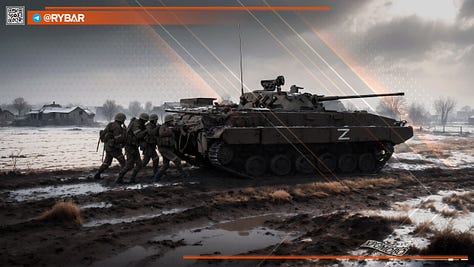
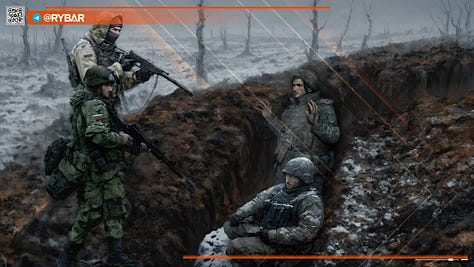
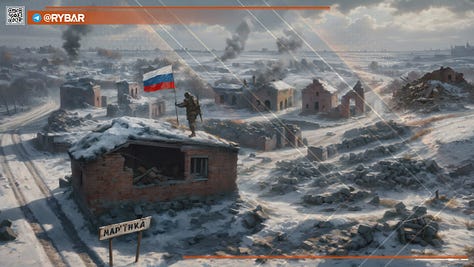
Your support is invaluable. If you enjoyed the read, I would greatly appreciate if you subscribed to a monthly/yearly pledge to support my work, so that I may continue providing you with detailed, incisive reports like this one.
Alternatively, you can tip here: Tip Jar



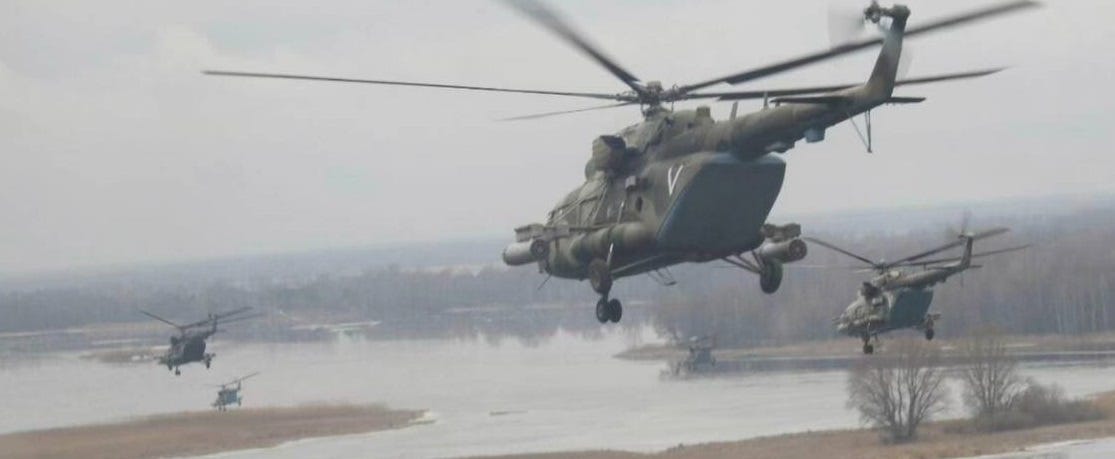

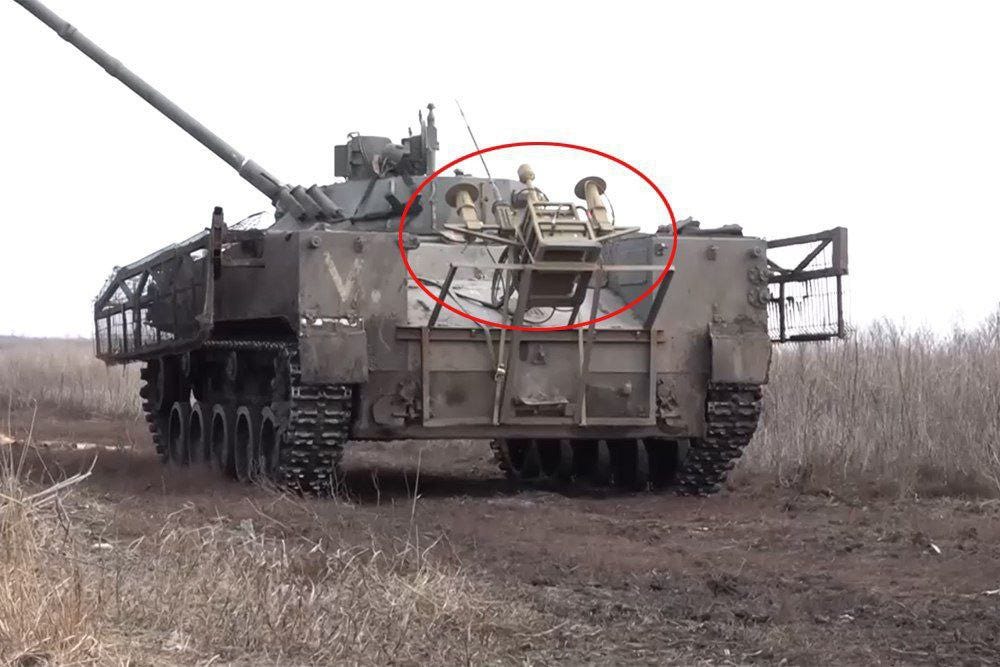
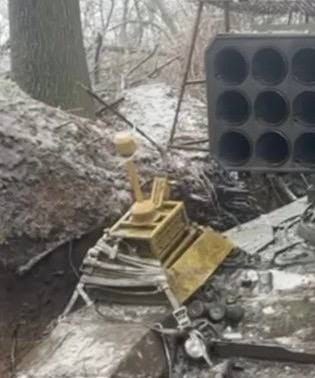
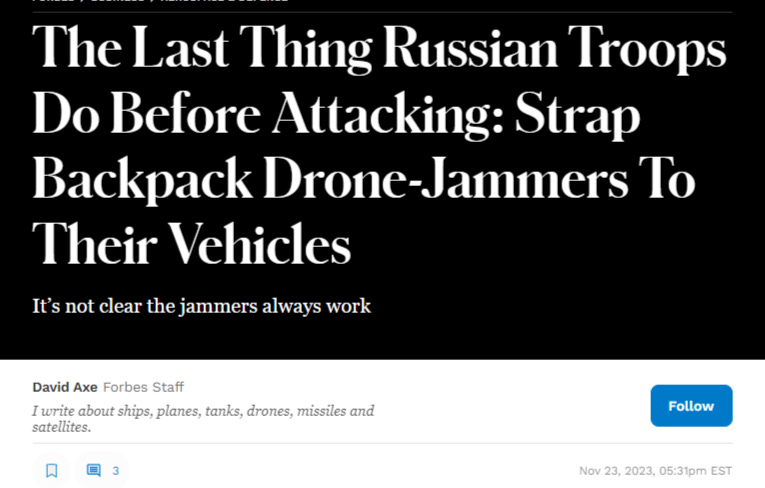
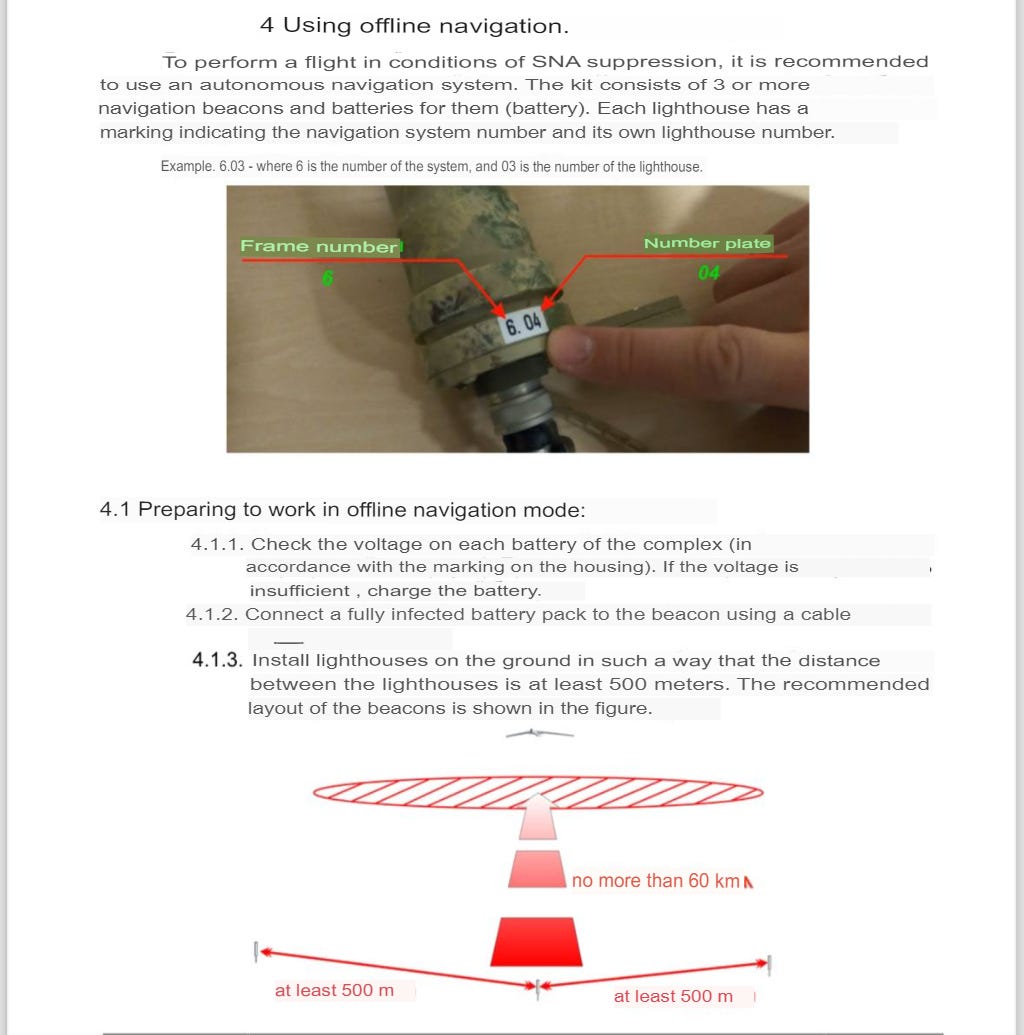
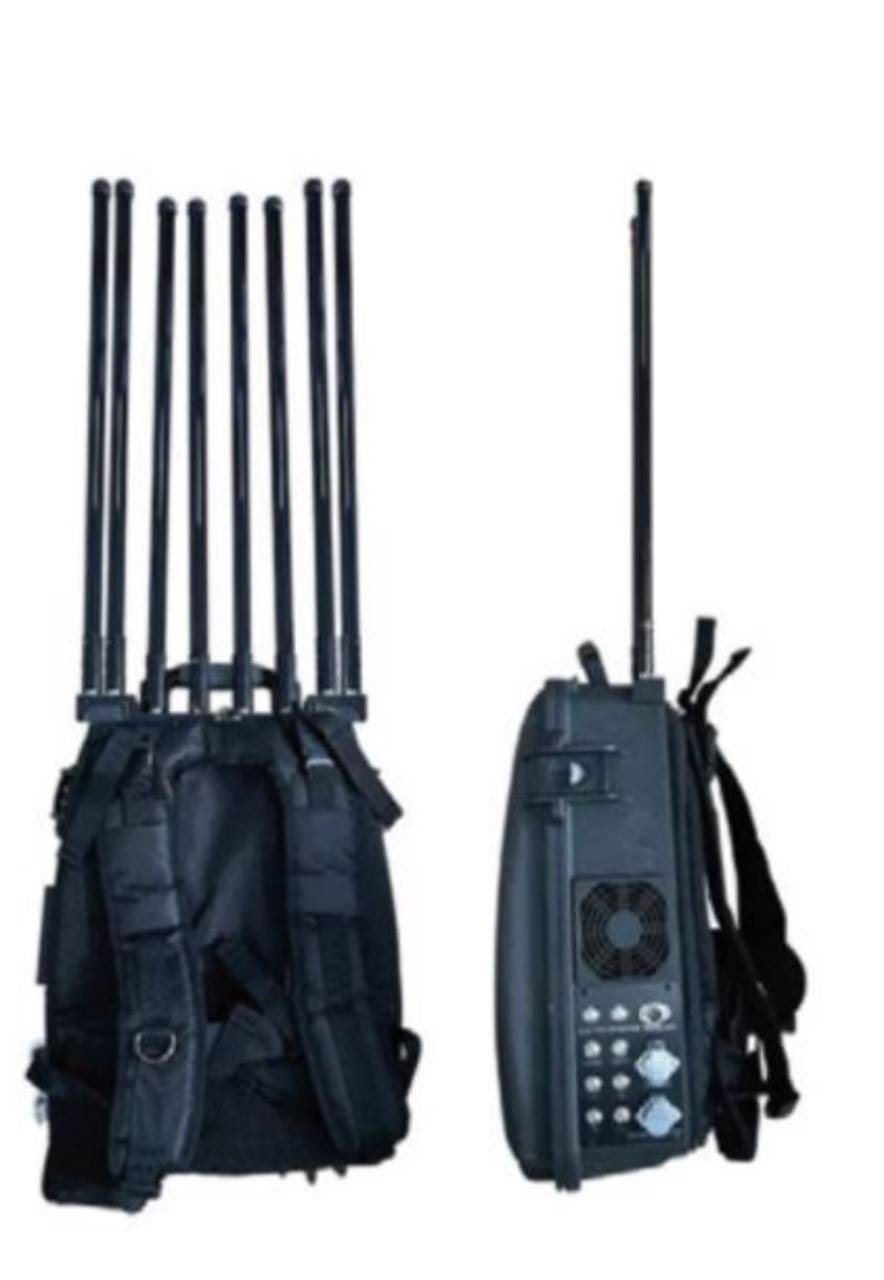
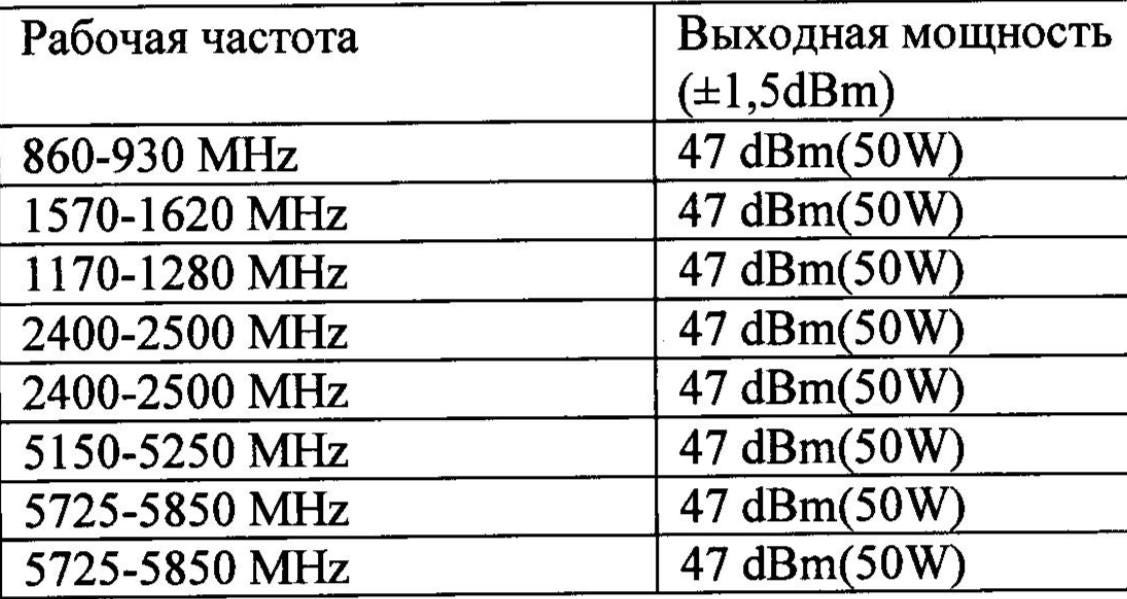
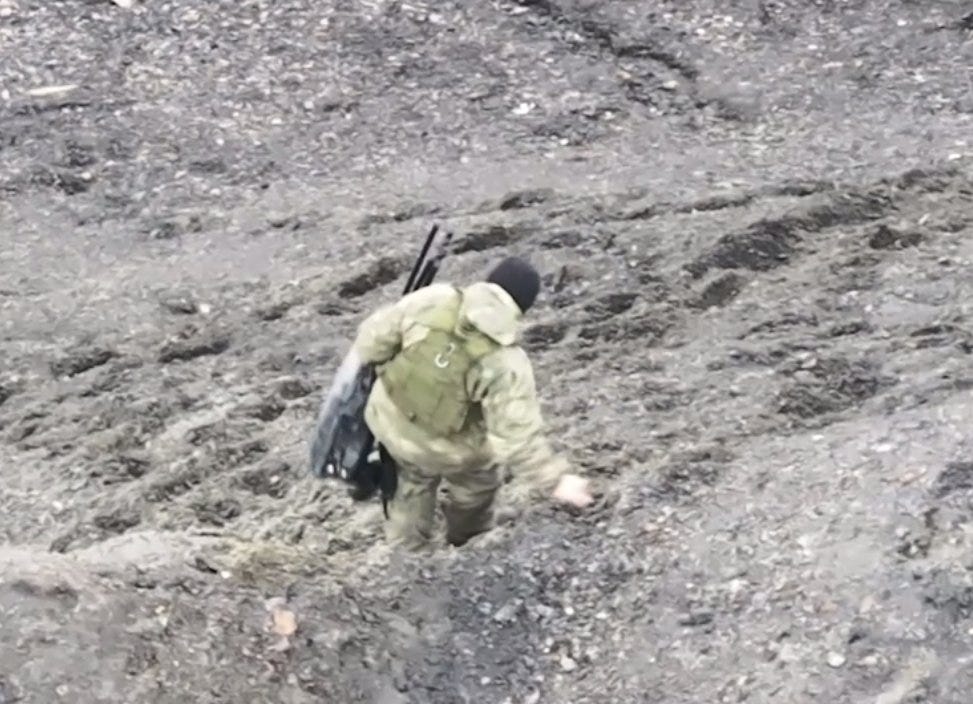
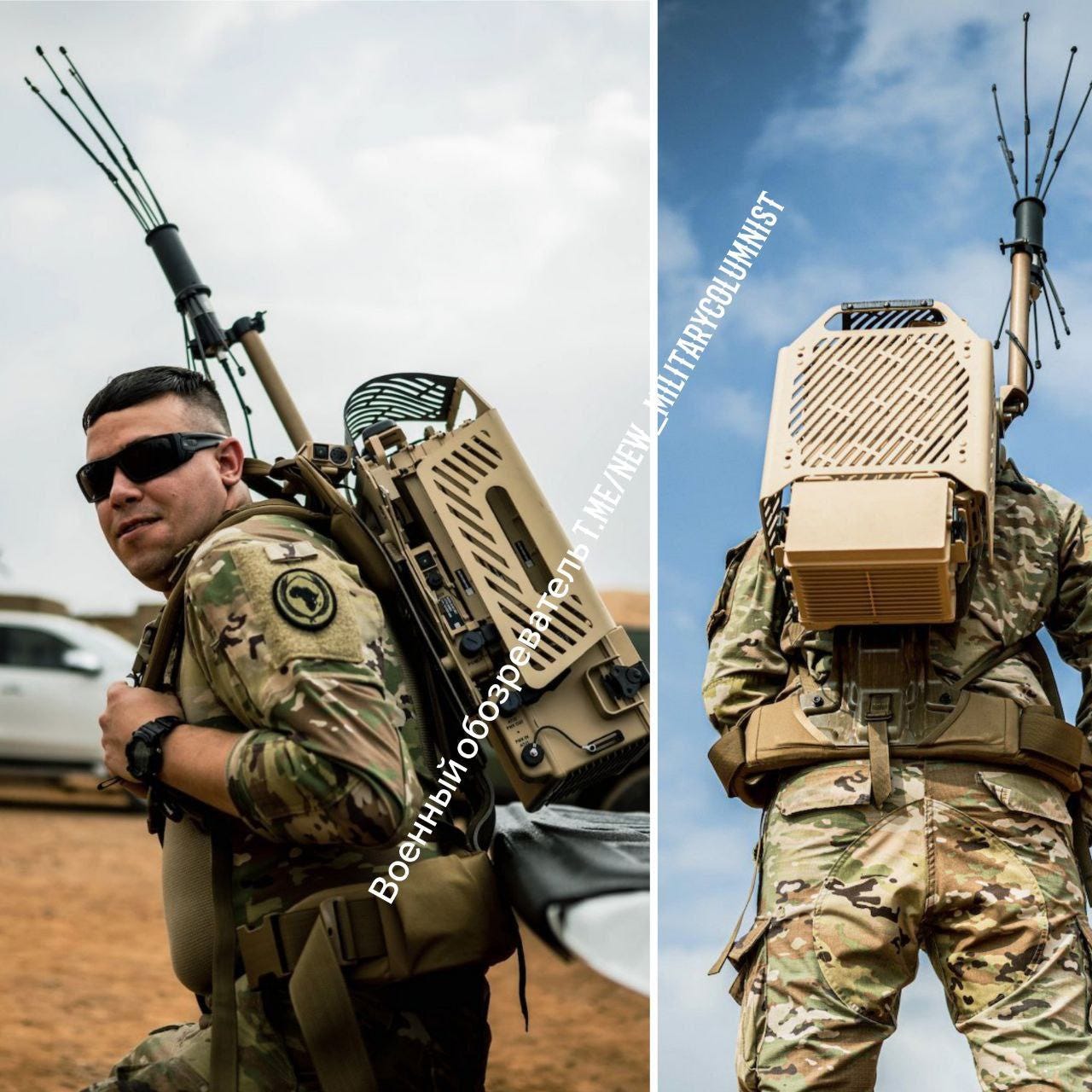
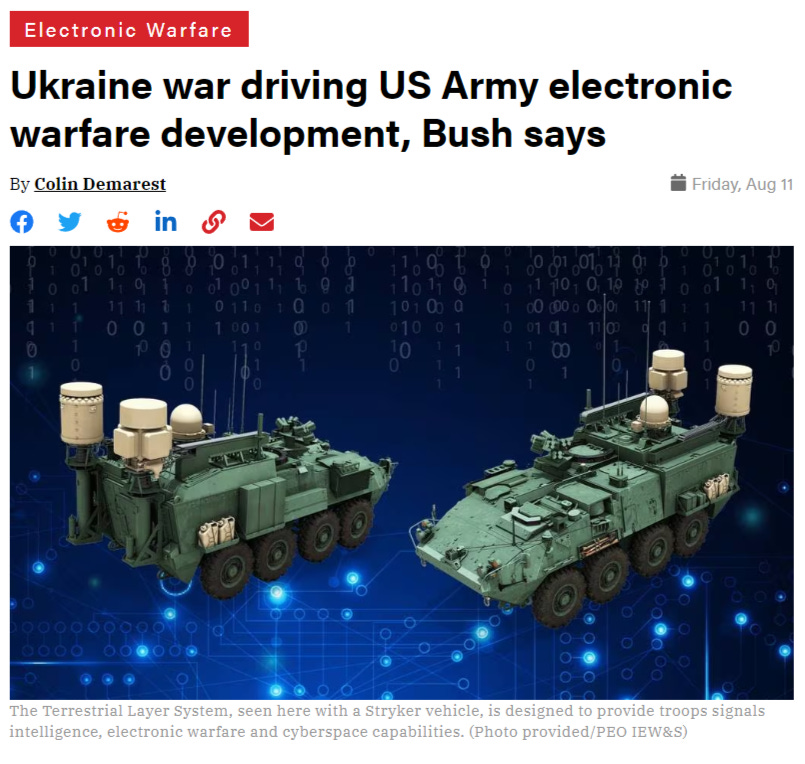
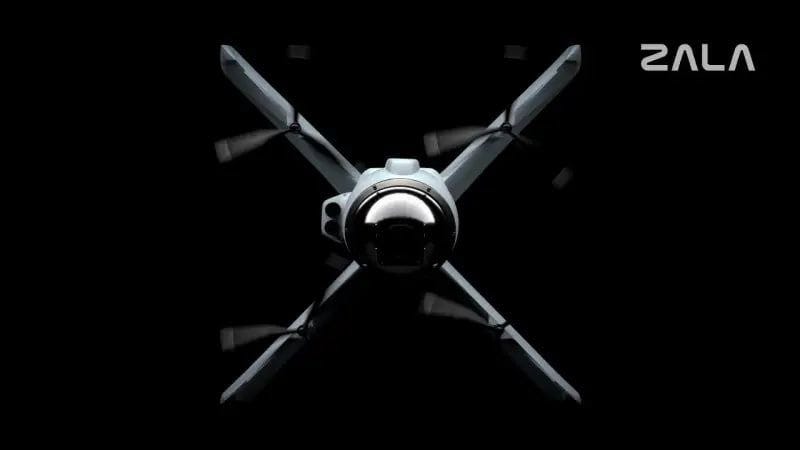
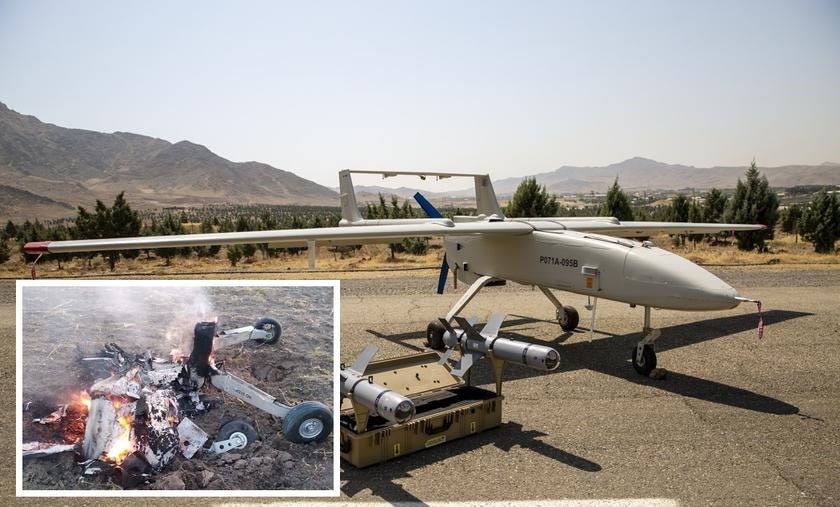
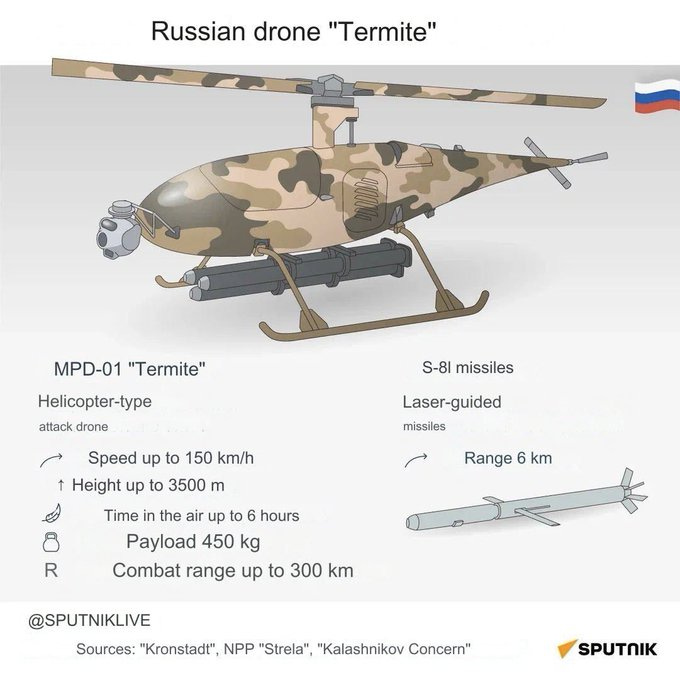
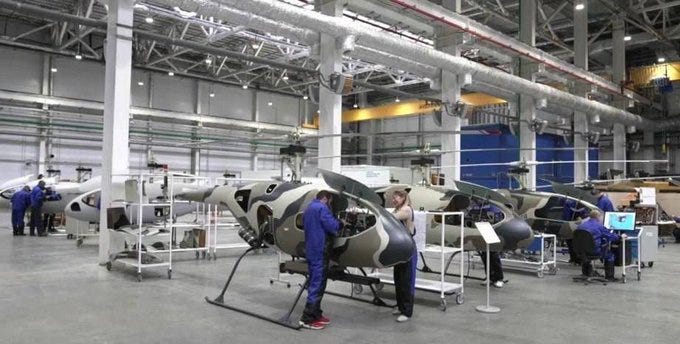
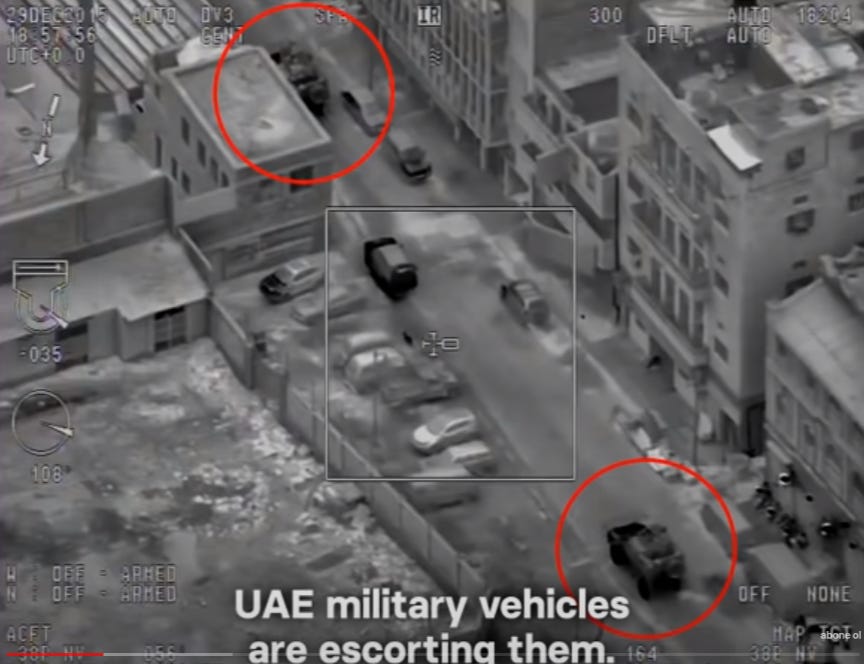
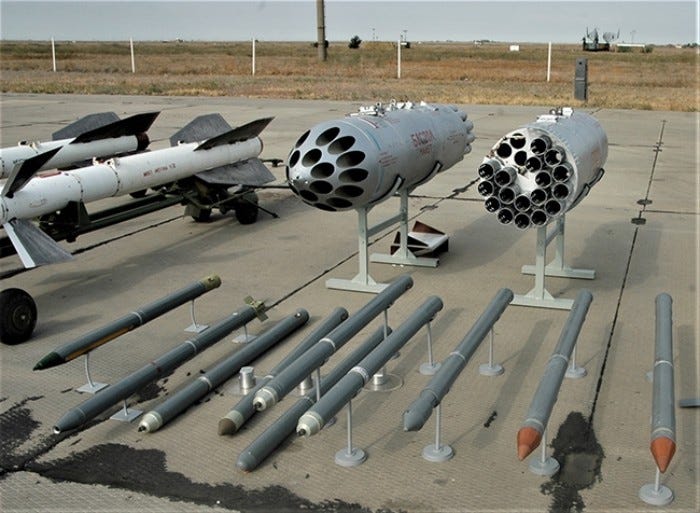
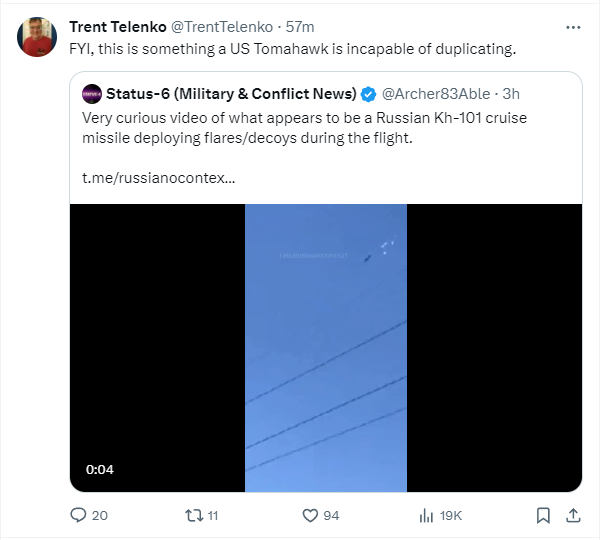
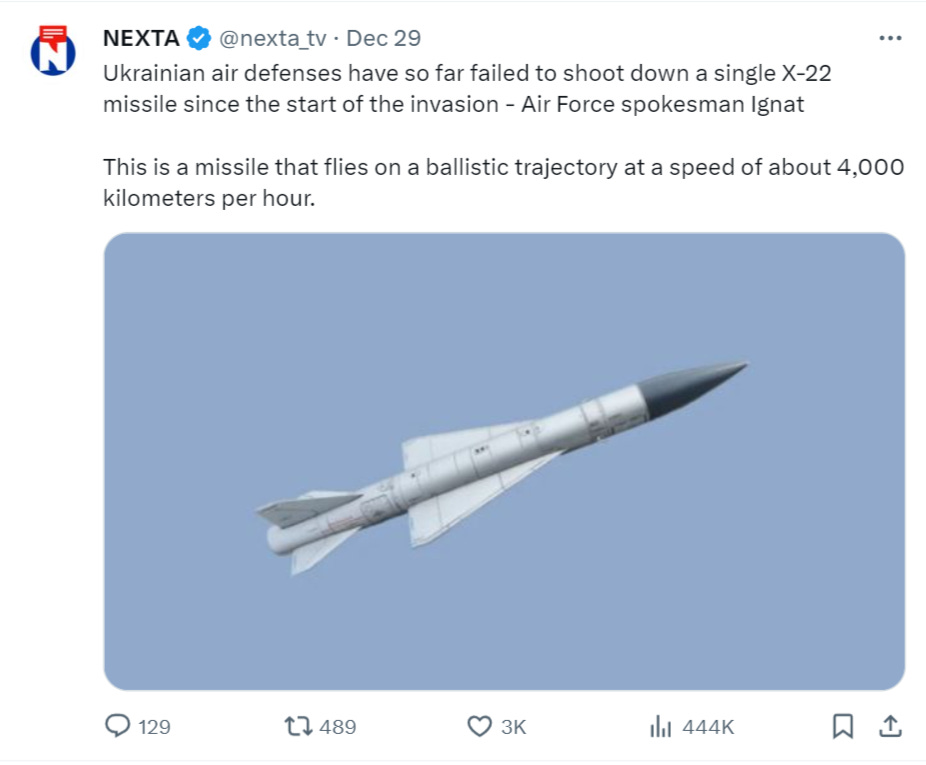
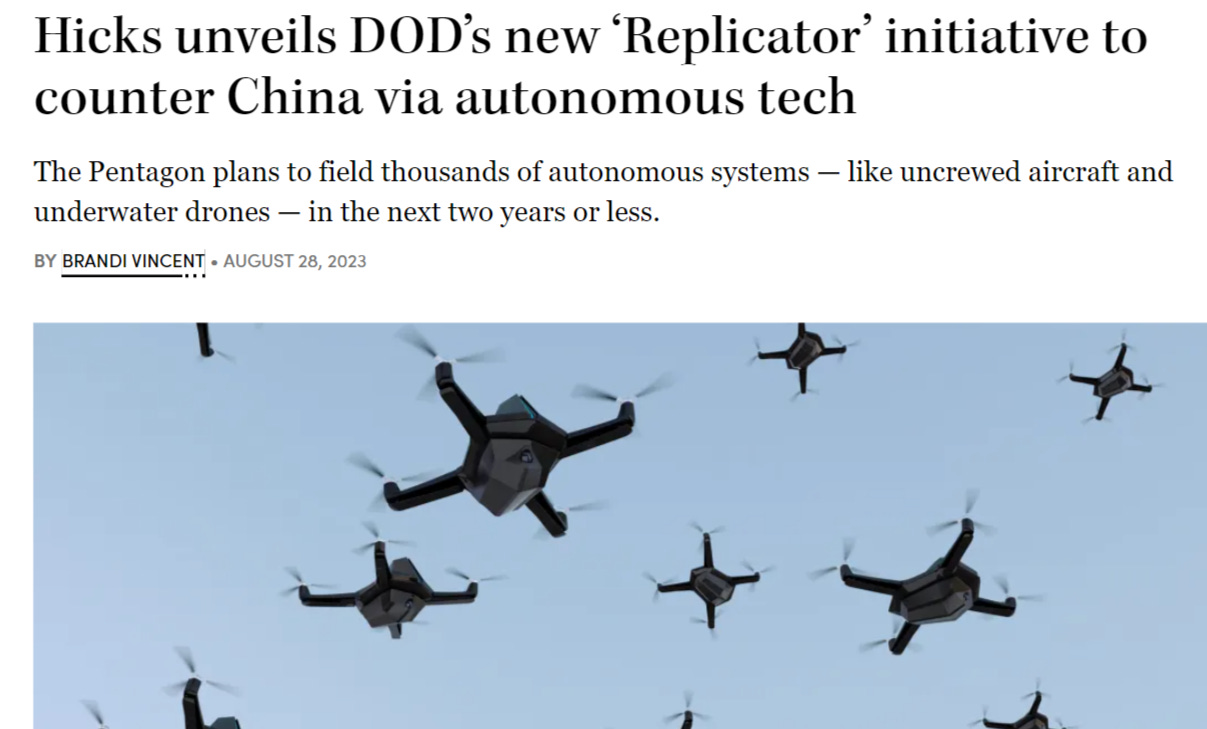

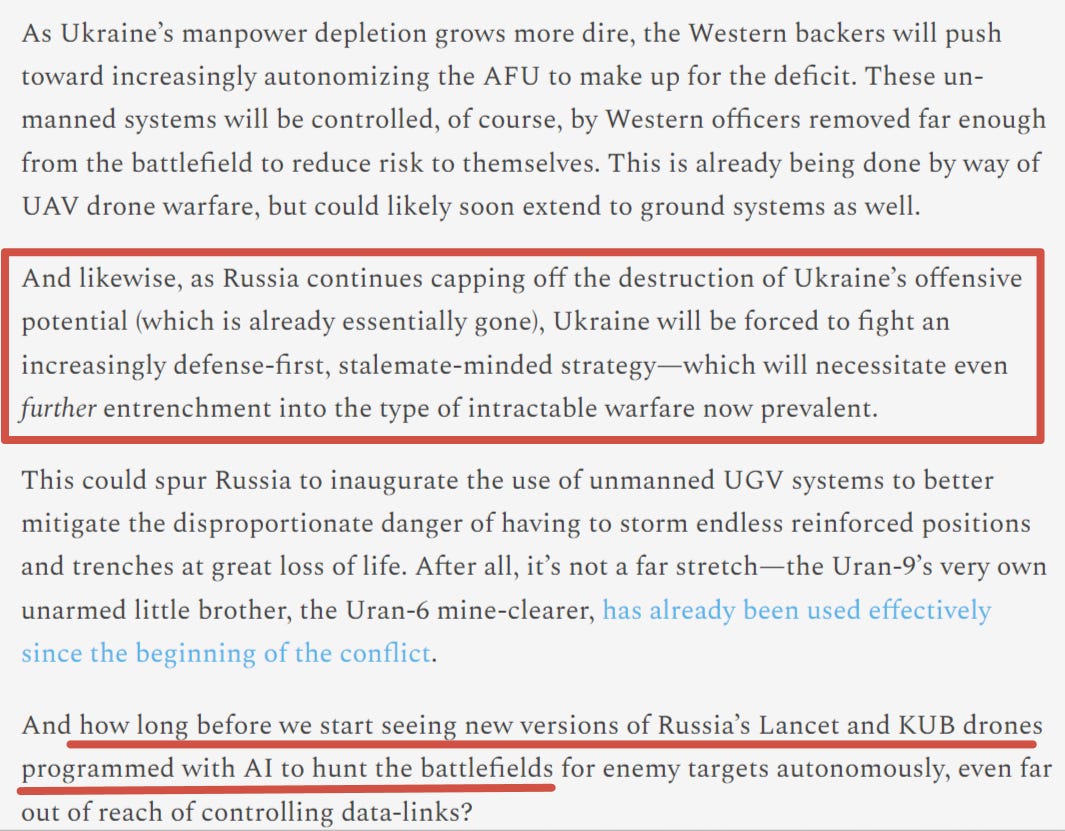
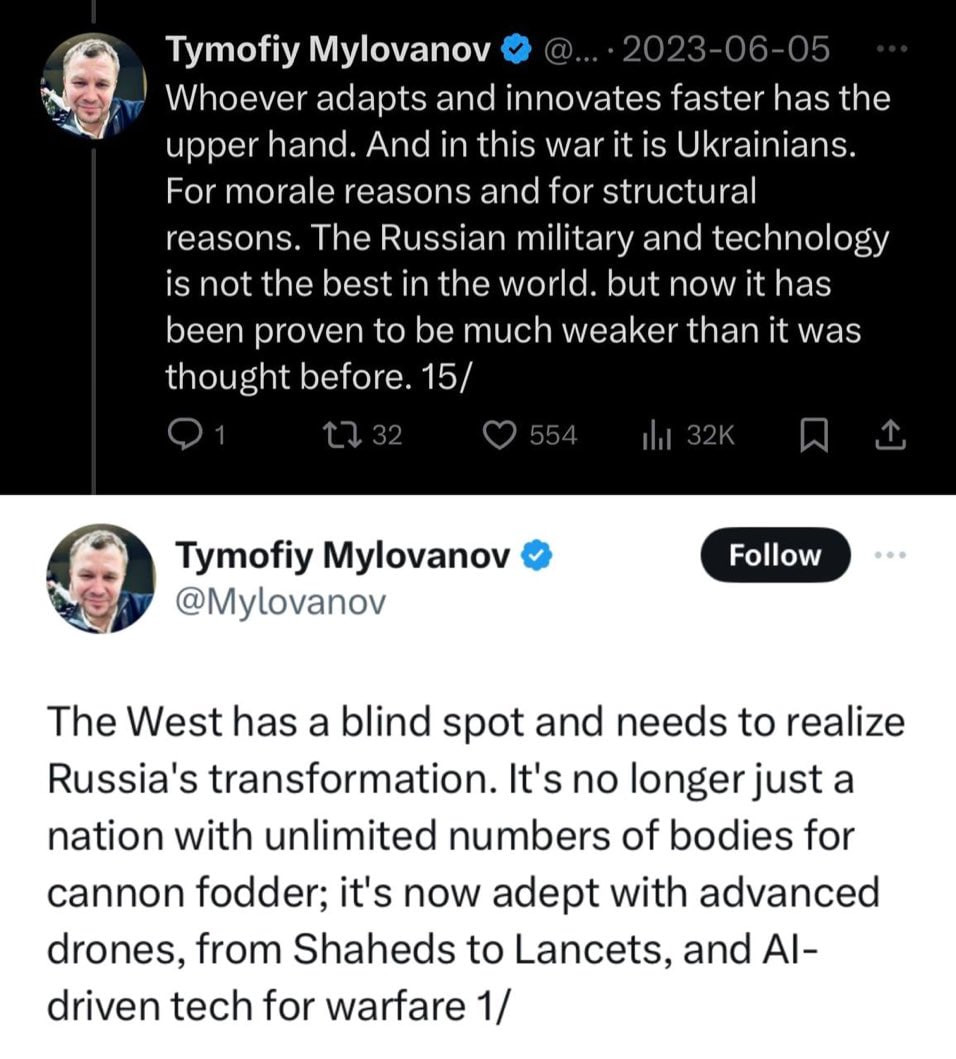

Thanks for your writings and your usual incisive commentary. One of the reasons I am a sub is because you prioritise truth above all on your substack
Too many pro-Ru commentators are quick to dismiss their opponents much in the same vein as how pro-Ukr or pro-West commentators dismissed Russia as a "gas station with nukes". The reality is there are motivated and brilliant people working on both sides and both are driven to win. Russia has a lot of deficiencies and the sanctions are partially effective. Admitting these problems is the first step towards solving them. And hoping that China or India comes to the rescue is remiss - they are net beneficiaries so long as the conflict continues.
I also salute the Ukrainian soldier - he is doing what I would do, or hope to, in his position. It is not his fault he is led by psychopaths with no strategic vision and being expended as fodder by the gardeners in the West.
Above all else I lament the wasted life, the men in the trenches who are made of greater stuff. May they inspire a generation of courage.
Happy 2024.
You know, just yesterday the AFU have launched a terrorist attack at civillian targets in Belgorod, killing 22 people. And guess how the regular Ukrainians reacted? With cheering and ecstatic glee! Yes, seeing dead Russian children was a huge morale boost for them. Heck, the AFU have been shelling random civillian targets at Donbass for almost ten years now, with no remorse from anybody on their side.
There is enough evidence, that a huge number of "simple" Ukrainias are no less crazy, sadistic and psychotic than their leaders and this is coming from as far as 2014, when people burned alive in broad daylight in Odessa were mocked as "roasted colorado bugs". So, I am sorry, but I find any cheering of Ukrainian soldiers as utterly disgusting.